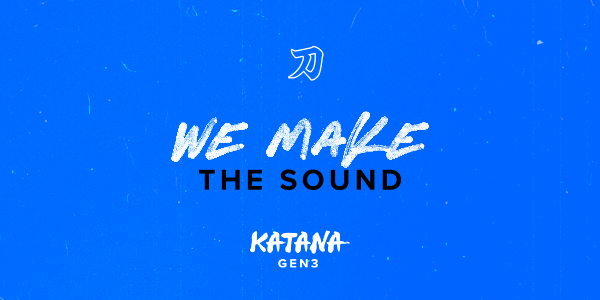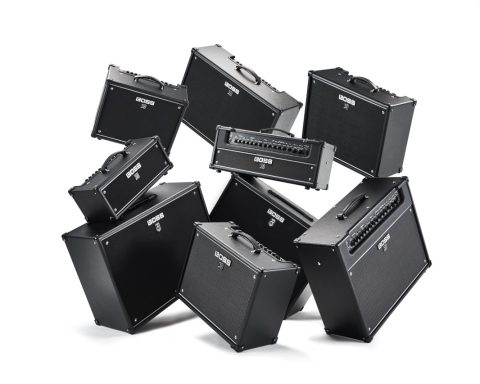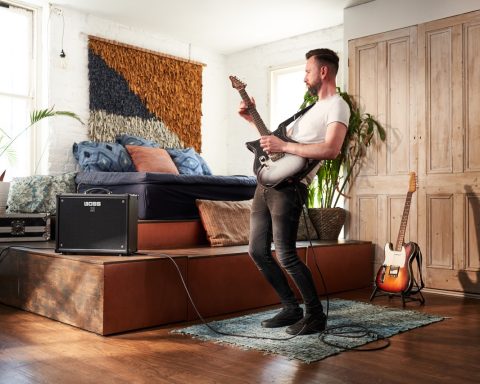With an ultra-responsive feel, gig-ready tones, and versatile onboard effects, BOSS Katana amps are popular with players of all abilities and styles. By design, BOSS Katana amps feature an instantly familiar interface that makes it easy to dial in and save great sounds on the fly. But there’s even more power under the hood, and it’s all accessible via the free BOSS Tone Studio editor. Read on as we check out all the cool things you can do with this powerful editor for the BOSS Katana amp series.
What is BOSS Tone Studio?
BOSS Tone Studio is a comprehensive free software platform designed to expand and enhance the versatility and functionality of the BOSS Katana Amplifier. It can be used for a host of features, including:
- Amplifier preset customization to shape the basic amp models deeper than on the amp’s control panel
- Access to an enhanced catalog of effects you can tailor and store on the amplifier, replacing the factory standards
- Visual signal chain and parameter editing
- Store and recall an entire library of different presets to shape your Katana into any amp for any genre or situation
- Store every preset in Tone Studio to be downloaded onto the Katana amp when needed
- Global amp settings and additional features
- Katana firmware updates to keep your amplifier up to date with the latest features, effects, and preset options
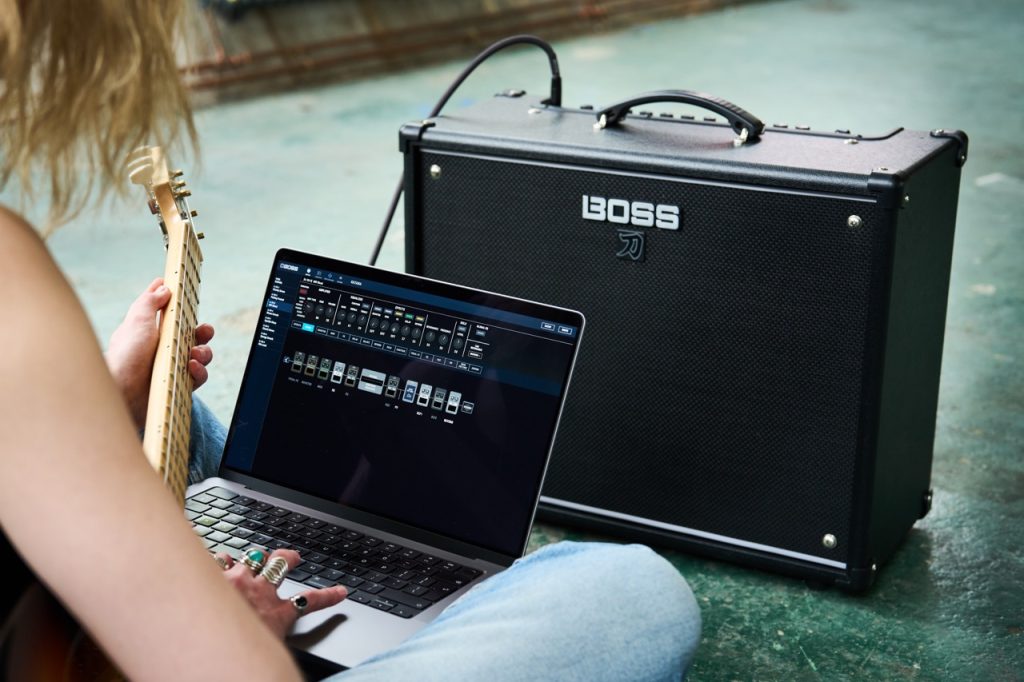
Why Use BOSS Tone Studio?
While any Katana amp works independently of Tone Studio, the level of flexibility and tonal control afforded by the platform can hugely expand your experience. The comprehensive range of effects and amp models can be a great way to explore new tones, and the additional control functionality of Tone Studio allows you to fine-tune every tone to perfection.
The expanded range of control for the amp and effects blocks of the Katana are intuitive, simple, and easy to get quick results from without adjusting a single control on the amp top. Plus, the wealth of online resources, from forums and Facebook Groups to YouTube videos and downloadable user and artist presets, is substantial. With almost a decade of great content and unique presets, there has never been a better time to join the Katana family.
"The expanded range of control for the amp and effects blocks of the Katana are intuitive, simple, and easy to get quick results from without adjusting a single control on the amp top."
Do I Need to Use BOSS Tone Studio?
All BOSS Katana amps function as stand-alone amplifiers. Katana comes loaded with six amp types with a variation model for each, a full range of boosts, pitch effects, overdrives, modulation effects, delay types and reverbs, a collection of prebuilt presets, and a vast range of power and tone shaping controls. Even without the addition of Tone Studio, the Katana is a formidable amplifier and one of the most comprehensive and versatile guitar amps ever built.
With all that in mind, Tone Studio can substantially enhance your creative control over your amplifier. The platform allows users to edit their presets to a highly detailed level. Each parameter can be fine-tuned to a value between 0-100, so you can make microscopic tweaks and dial in sounds to perfection.
"Each parameter can be fine-tuned to a value between 0-100, so you can make microscopic tweaks and dial in sounds to perfection."
Additionally, the Tone Studio Librarian Mode allows you to store and recall many presets, so you can build your tones based on song, session, or gig and assign them from Tone Studio to your Katana when needed—perfect for storing different setlists for function and session players, and ideal for musicians who play in more than one genre of music.
So, while you can enjoy the Katana without connecting it to BOSS Tone Studio, if you want to explore deep sound creation and customization, try it.
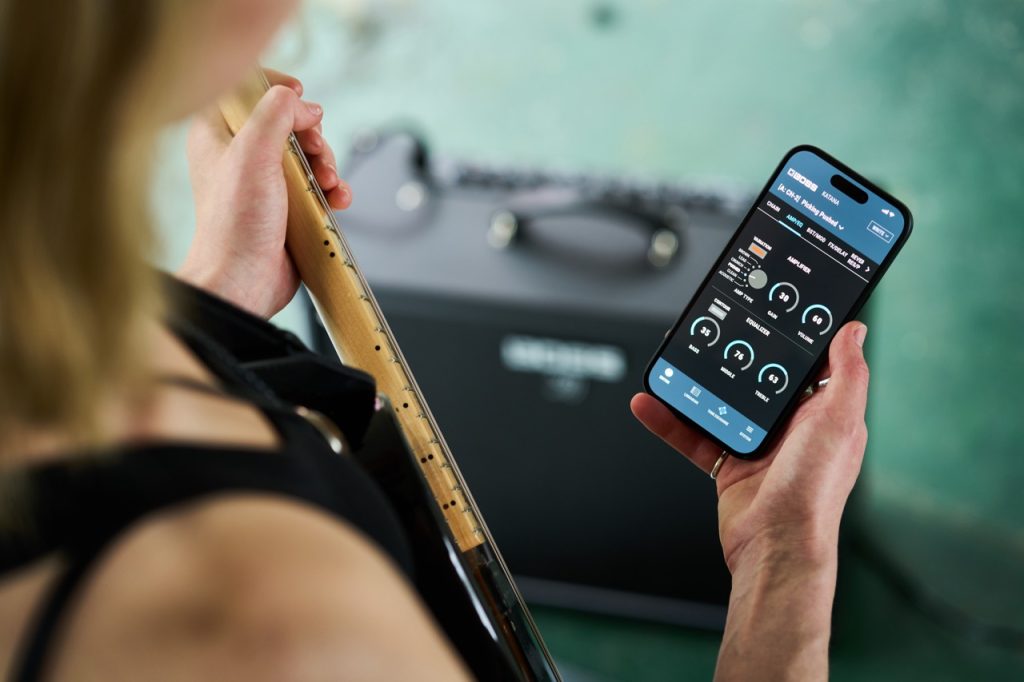
Getting Started
If you already have a Katana amp and want to get started with BOSS Tone Studio, you’ll need to download and install the following items:
- The latest firmware for your Katana amp model (if required)
- The Katana driver for your computer’s operating system
- BOSS Tone Studio for Katana
NOTE: Download Gen 3 links for the current Katana Gen 3 models.
To find these files, go to the product page for your BOSS Katana model and click on the Downloads tab. Before installing them, carefully read the step-by-step instructions provided with the downloads. For a PDF instruction manual for using BOSS Tone Studio with the Katana amps, click on the Support tab on your amp’s product page. If you don’t yet own a Katana amp, you can still download the BOSS Tone Studio editor and use it offline to explore its features.
"If you don’t yet own a Katana amp, you can still download the BOSS Tone Studio editor and use it offline to explore its features."
BOSS Tone Studio for Katana Gen 3
Once your Katana amplifier is connected to BOSS Tone Studio, you’ll see an intuitive graphic interface for adjusting nearly everything in the amp. You can tweak amp tones, load and customize different effects, save and recall Tone Settings, and more. The software directly interacts with the amp, allowing you to create sounds as you play easily. Any editor adjustments you make are immediately reflected in the amp, and vice versa.
Navigating BOSS Tone Studio
Tone Studio is intuitive and laid out to be easy to use, so you can focus on getting great tones in minutes. The basic amplifier control panel is at the top of the main editor screen, so you can quickly choose an amp type, set EQ, and select any effects at a glance. Beneath are tabs for fine-tuning each of the five effects categories, and the Noise Suppressor is uniquely available on the Tone Studio platform rather than the amp top control panel.
The Librarian tab allows you to save and store any presets created with Tone Studio. These can be stored in Livesets to catalog your tones based on the show, song, or session they’re needed for. You can also Import and Export your presets, create backups, and store notes about each set.
The System tab accesses the master settings for the amp and software. You can adjust MIDI, USB, and device settings, plus download the latest Katana owner’s manual.

Customizing Amp Settings
At the top of the main editor screen, all the amplifier controls are accessible. With fine control of each parameter from 0-100, you can make microscopic tweaks and perfectly dial in sounds. The eight tabs beneath the Amp Control panel on the editor screen allow you to fine-tune Katana’s many features.
Editing Onboard Effects
Each Katana amp includes access to over 60 different BOSS effects along with its fantastic amp tones. With BOSS Tone Studio, you can audition and edit these effects and load them up in the 15 available onboard storage locations. Katana effects are organized into five different categories:
- Booster
- Mod
- Delay
- FX
- Reverb
You can only load effects from those groups in the Booster and Delay categories. The Mod and FX categories can load effects from the combined Mod/FX group, allowing you to have the same effect assigned to both categories if you wish. You might find this desirable when setting up the effects chain, which we’ll discuss coming up. The Reverb category allows you to assign Reverb, Delay, or a combination of both at the same time. Each category has three available slot locations; you can load a different effect in each.

Customizing Your Effects Chain
The next tab, along with Effects, is Chain; this tab allows you to choose the order of the effects in your signal path and whether they are before or after the preamp.
Seasoned players know that some effects work best before the amplifier, while others work best after the amplifier’s preamp section. Generally, you’ll want to use wahs, compressors, overdrives, distortions, boosters in front of the amp, and reverb after the preamp. With mod and delay effects, it depends. You might want to use them in either location, depending on the sound you are after. The BOSS engineers have considered this, allowing you to adjust the order of the effects with BOSS Tone Studio.
"Each effect has a full range of parameters you can tweak to create the perfect preset, giving you far greater control than the amplifier itself."
Fine-Tune Effects Parameters
The following five tabs allow you to fine-tune and create presets for the Katana effects blocks. Each effect has a full range of parameters you can tweak to create the perfect preset, giving you far greater control than the amplifier. Once loaded back onto the amplifier, only one assigned parameter can be controlled via the amp top control.
The final tab controls the onboard noise gate. While this effect is not editable or controllable on the amplifier itself, it can be beneficial when dealing with high-gain presets and fuzz tones to maintain the maximum amount of saturated gain while clamping down on the hiss caused by elevated gains settings.

Saving Tone Settings
After you adjust the various parameters to your liking, you can save them as a Tone Setting in the Katana. Just click the WRITE button in the upper right corner of the Editor page, give the setting a name, and save it to the desired destination (CH1, CH2 on Katana 50 models or CH1, CH2, CH3, or CH4 on KTN 100 models). Both models offer two banks, Bank A and B, meaning four memories for 50 or eight memories for 100 amps.
Librarian and Livesets
BOSS Tone Studio also includes a librarian that allows you to back up the current settings in the amp, work with Livesets, and more. Livesets provide a way to store and organize Tone Settings into groups for different gigs, songs, recording sessions, or whatever you want. When you want to load them into the Katana, drag them to the desired locations on the left side of the screen.
"Livesets provide a way to store and organize Tone Settings into groups for different gigs, songs, recording sessions, or whatever you want."
Examples
Download Pro Livesets at BOSS Tone Central
When your computer is connected to the web, BOSS Tone Studio provides direct access to BOSS Tone Central. Click on the Tone Central button to browse the many Katana Liveset collections created by top pro players. You can audition audio demos of the sounds, save them directly to your amp, and add them to your local Katana library.
You can also take advantage of our free community patch-sharing platform, BOSS Tone Exchange, where you’ll find many Katana sounds created by the dedicated online Katana community.
Additional Katana System Settings
Clicking on the SYSTEM button will take you to some master settings for the amp and software. You can adjust MIDI, USB, and device settings here, download the latest Katana owner’s manual, and more.
The Katana-50 EX, Katana-100, Katana-100/212, Katana-Head, Katana-Artist, and Katana-Artist Head are all equipped with a rear-panel effects loop for patching in external effects devices. From the Send/Return tab in the editor, you can adjust the send/return levels for the loop, set the position pre or post-amp, and for either series or parallel operation. For more on adding external pedals to the BOSS Katana, read our guide here.

Bluetooth® Audio
The Katana Gen 3 series of amps can also be controlled via the optional Bluetooth® Audio MIDI Dual Adaptor (BT-DUAL) for wireless audio playback from a mobile device and remote editing from the BTS app (iOS/Android). Effortlessly and wirelessly edit your sounds on the fly.
Endless Customization
Tone Studio offers a near-endless level of customization. The broad range of effects and amp models and the comprehensive customization, control, and preset storage means your creativity can be explored to the fullest in any genre for any musical application. We wish you luck on your sonic voyage with Tone Studio. Remember, with Tone Studio, the Katana can become any amplifier you want it to be. Explore its vast capabilities to the fullest.
- Explore the Katana Gen 3 Amplifier Series



